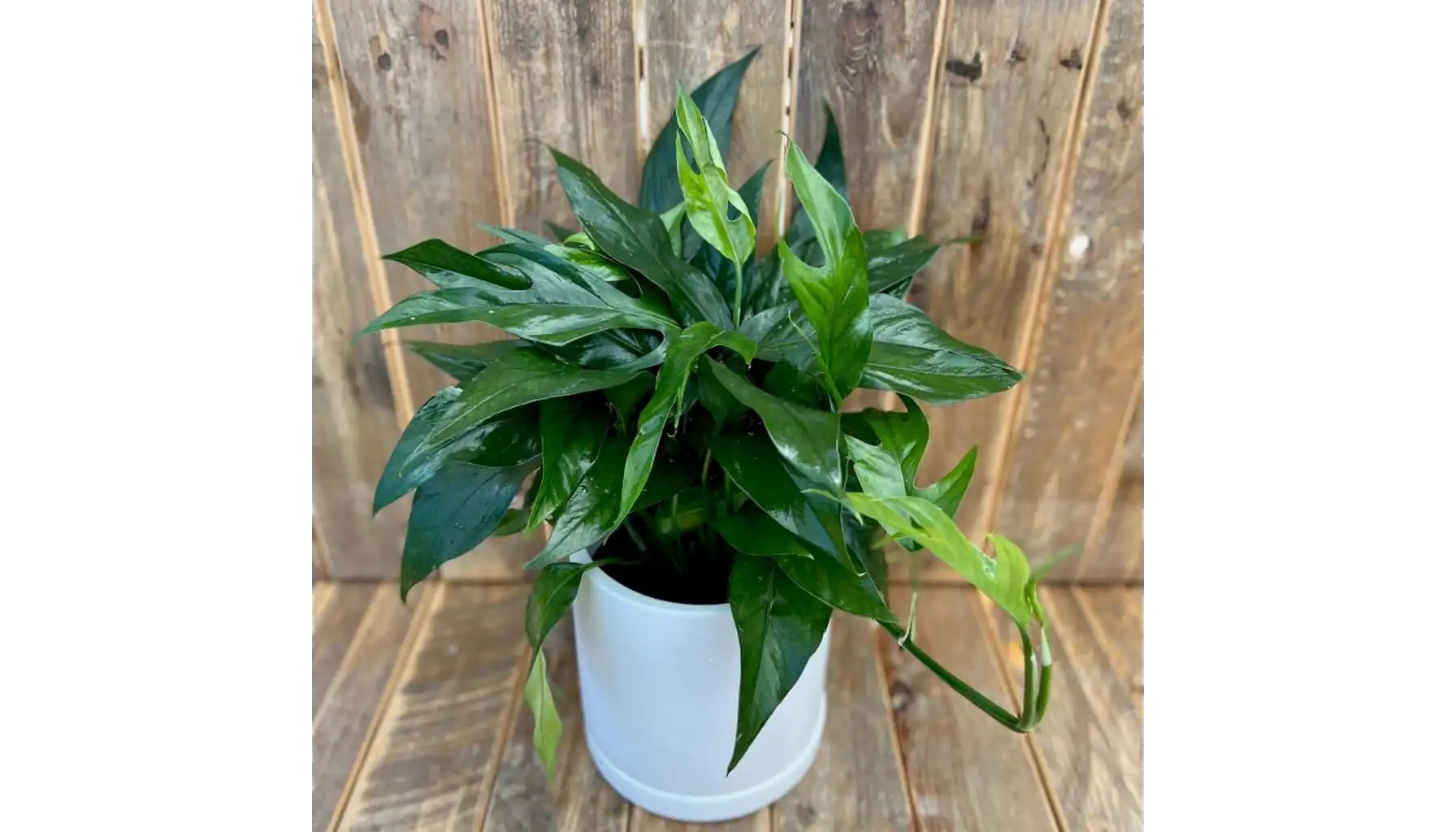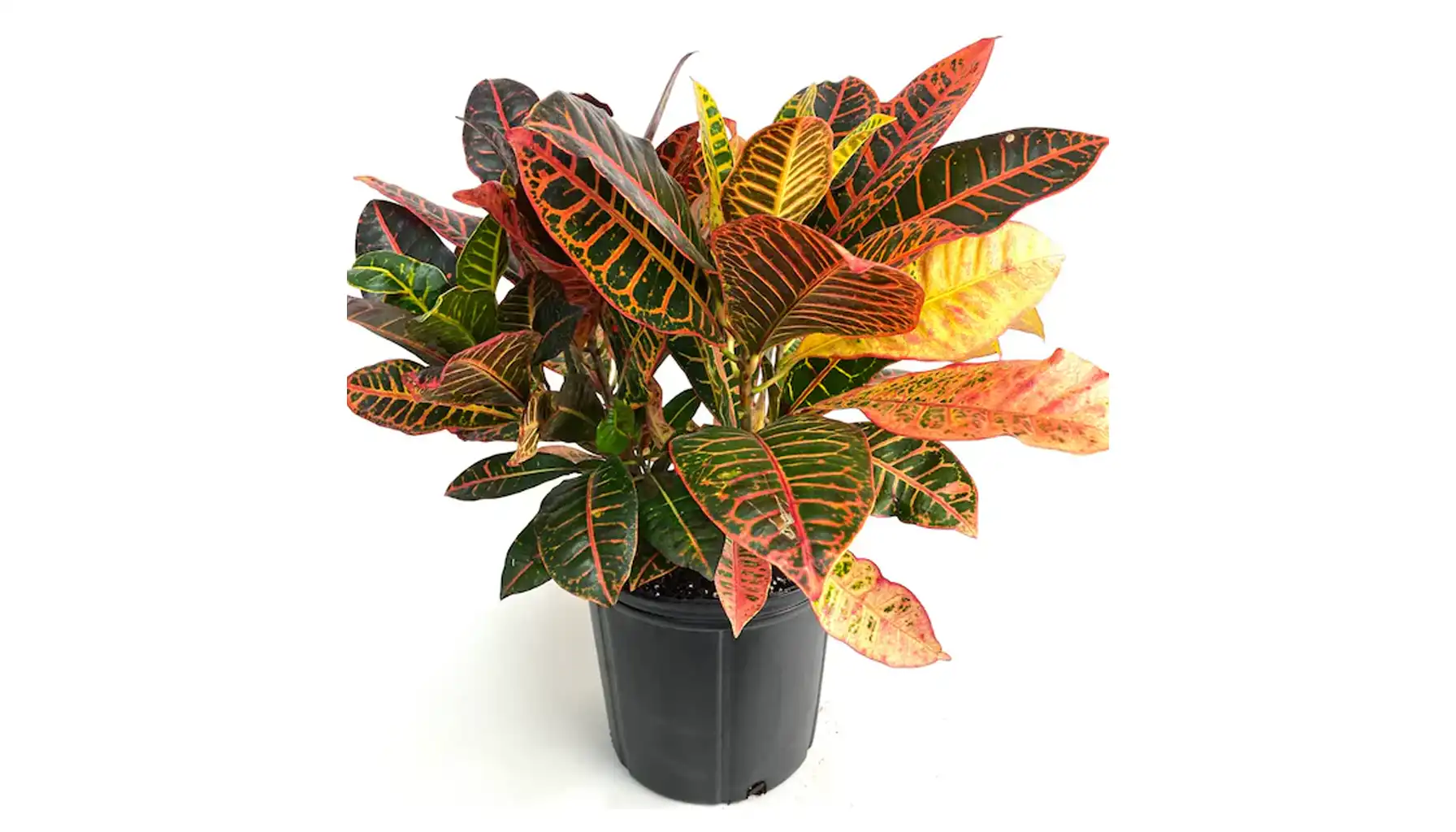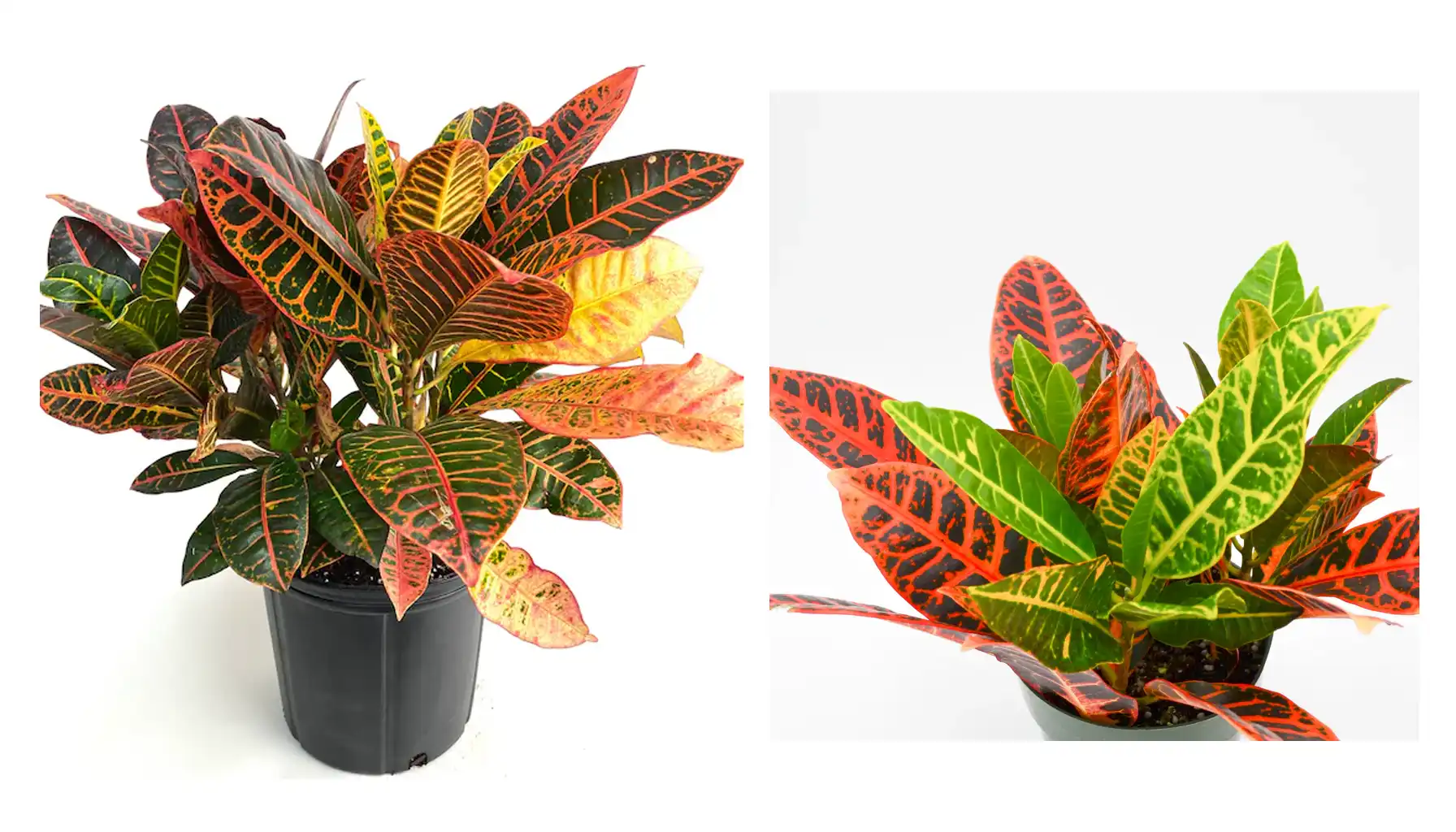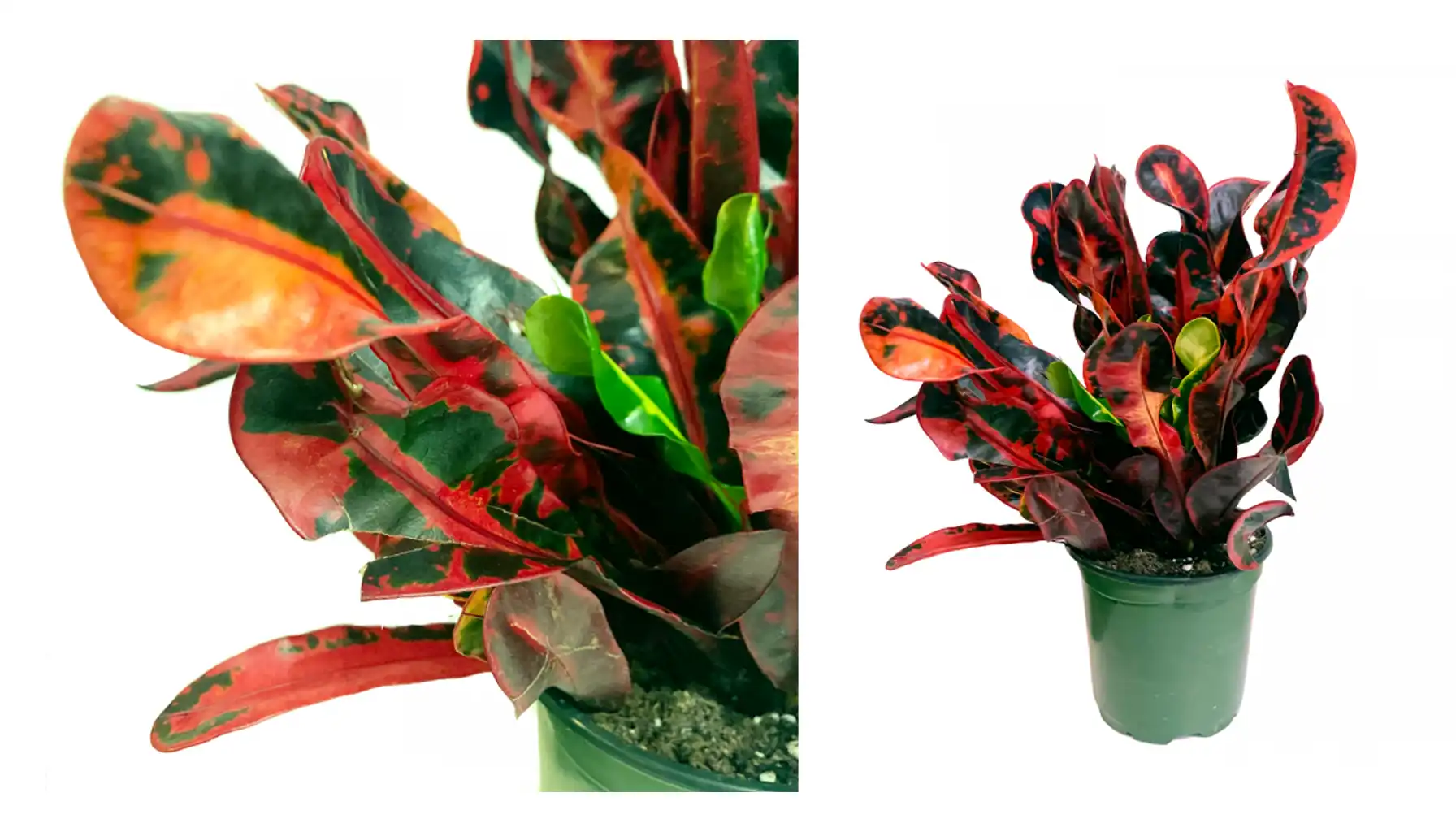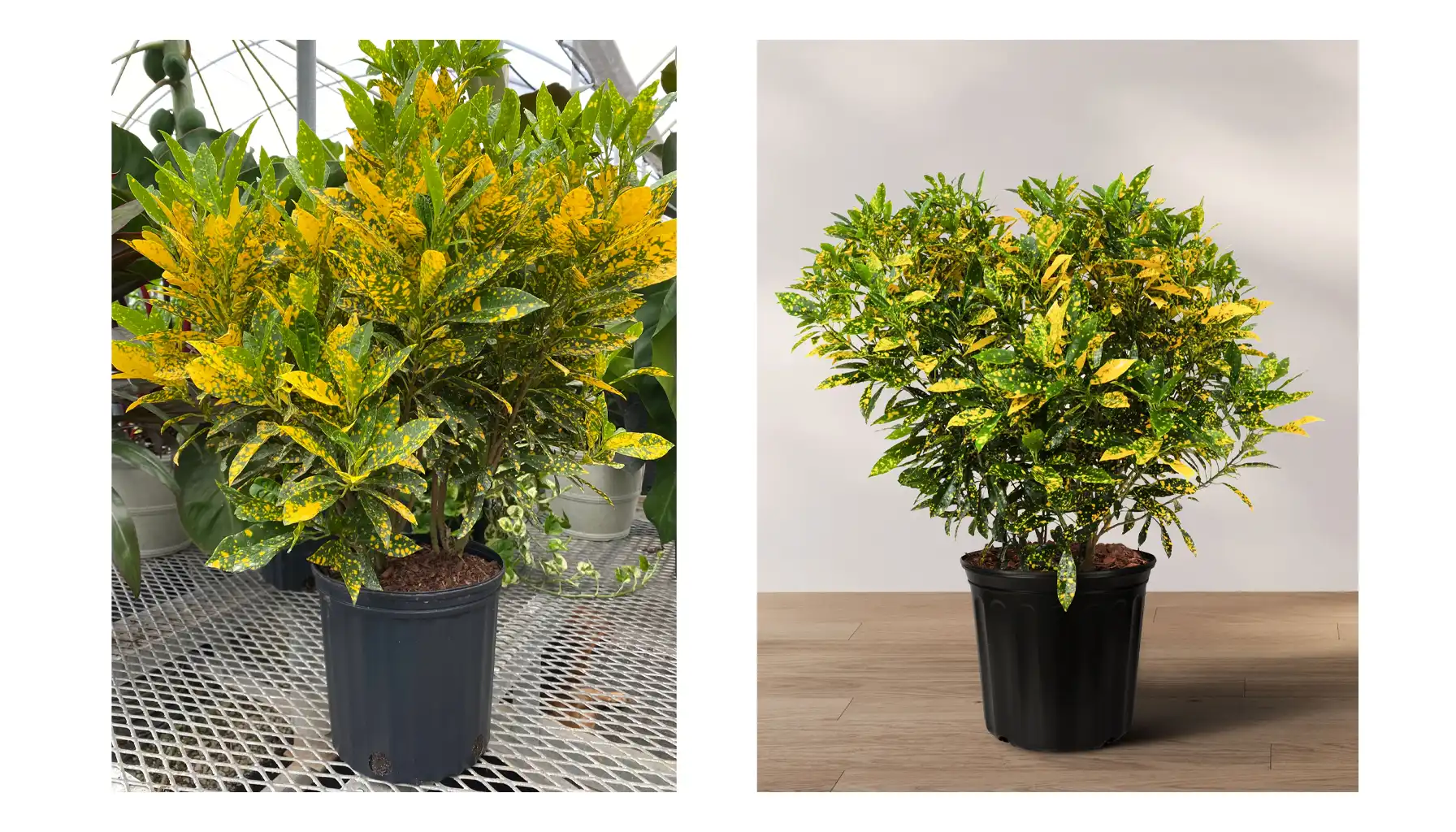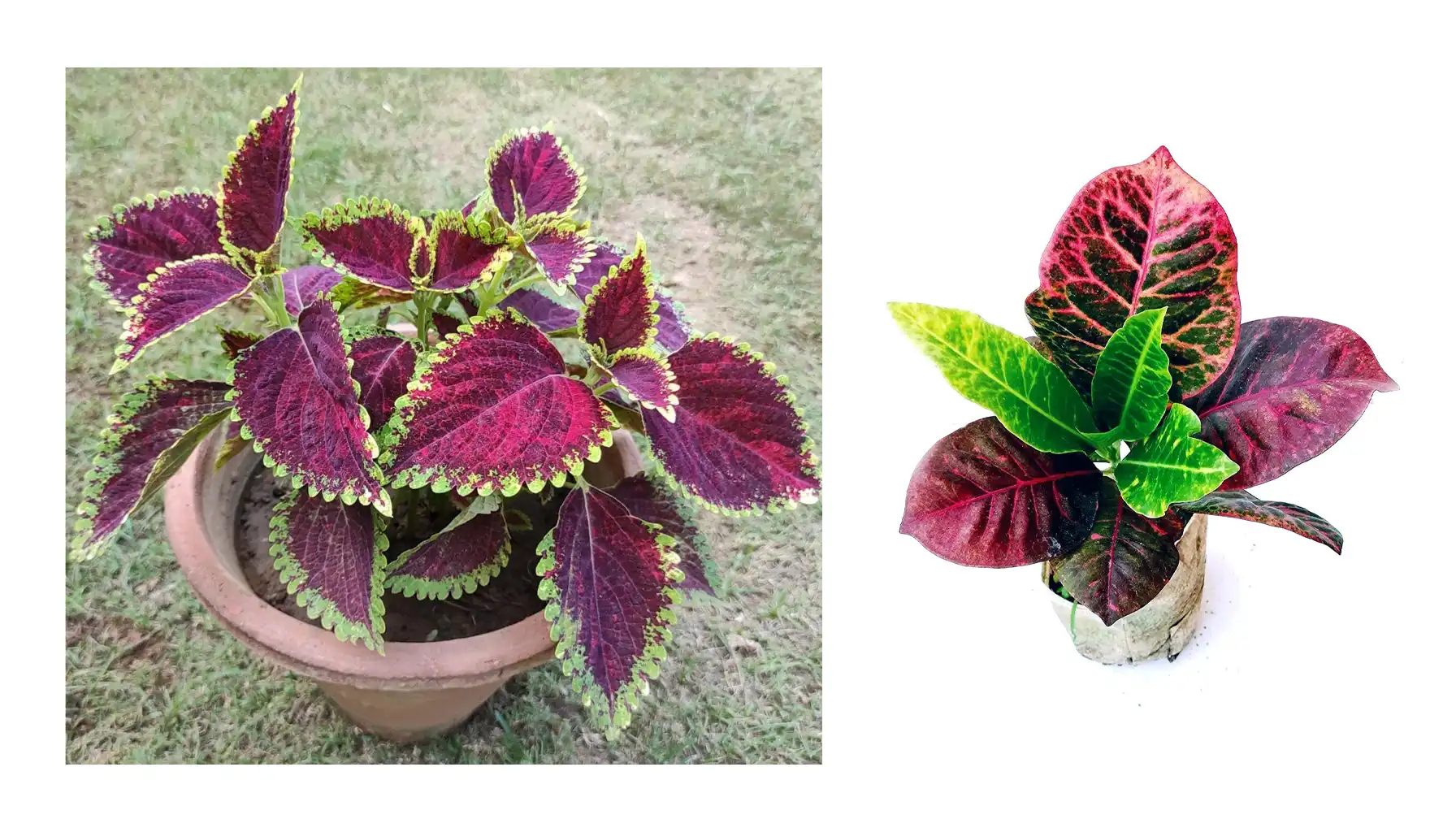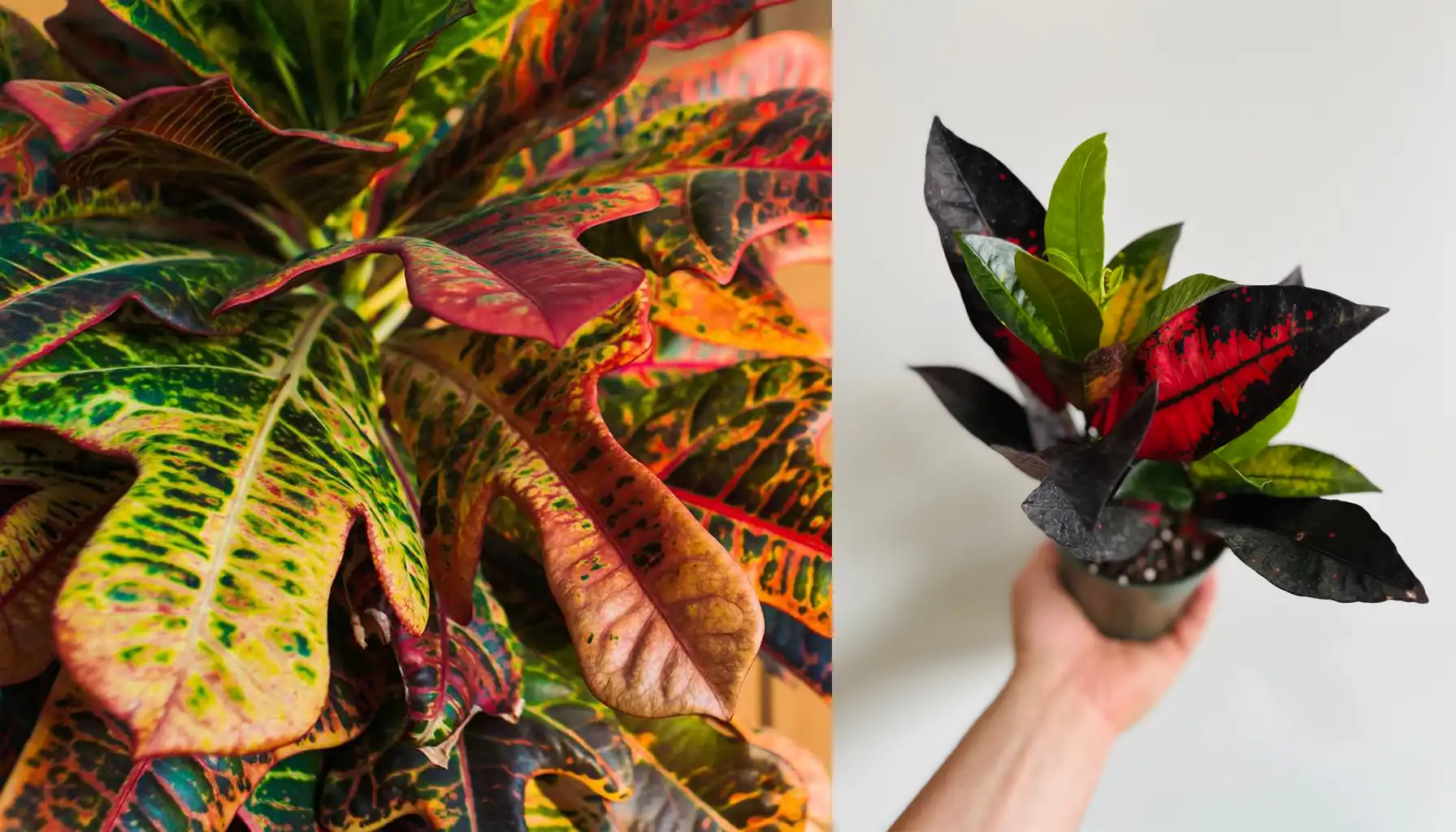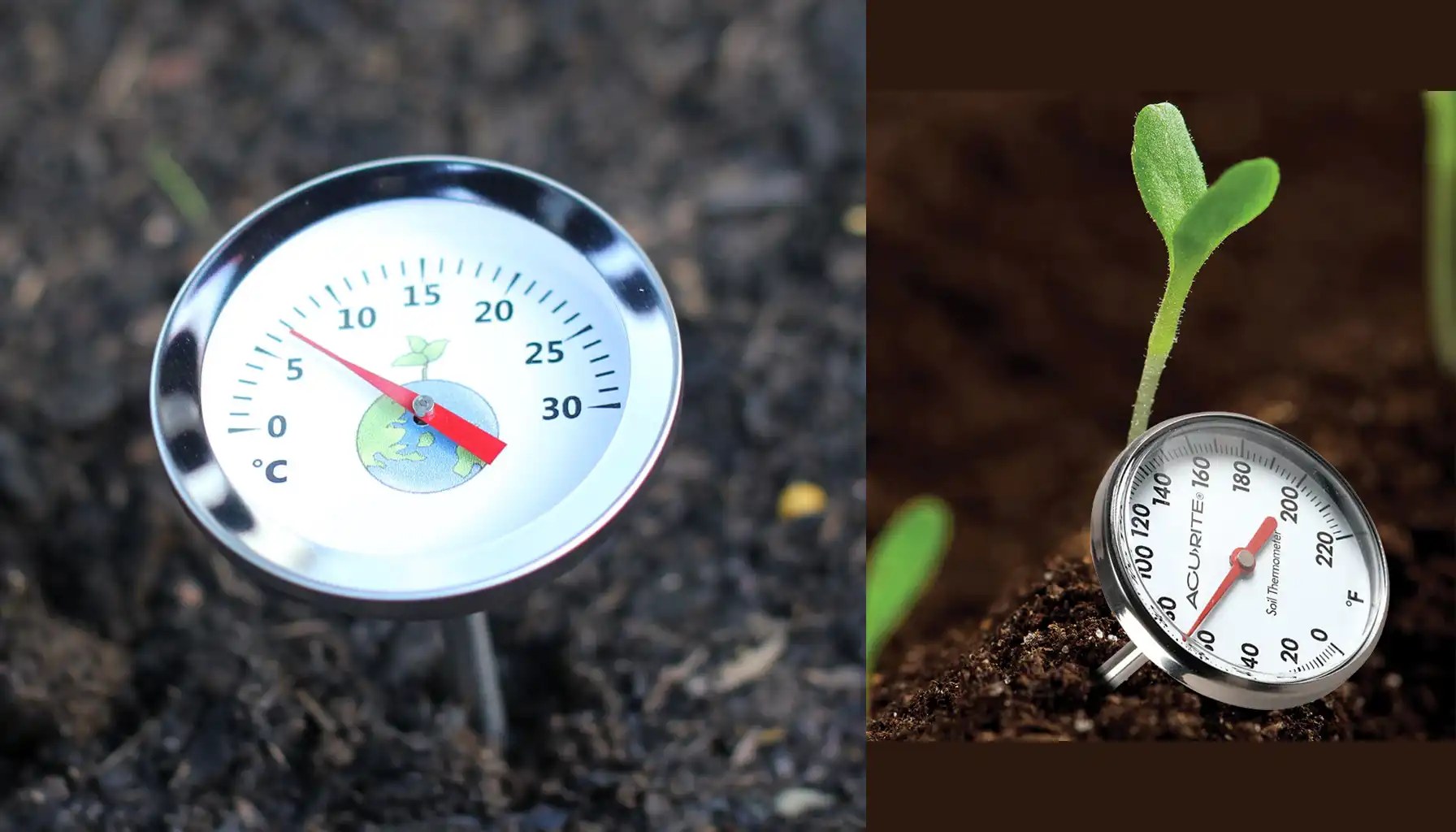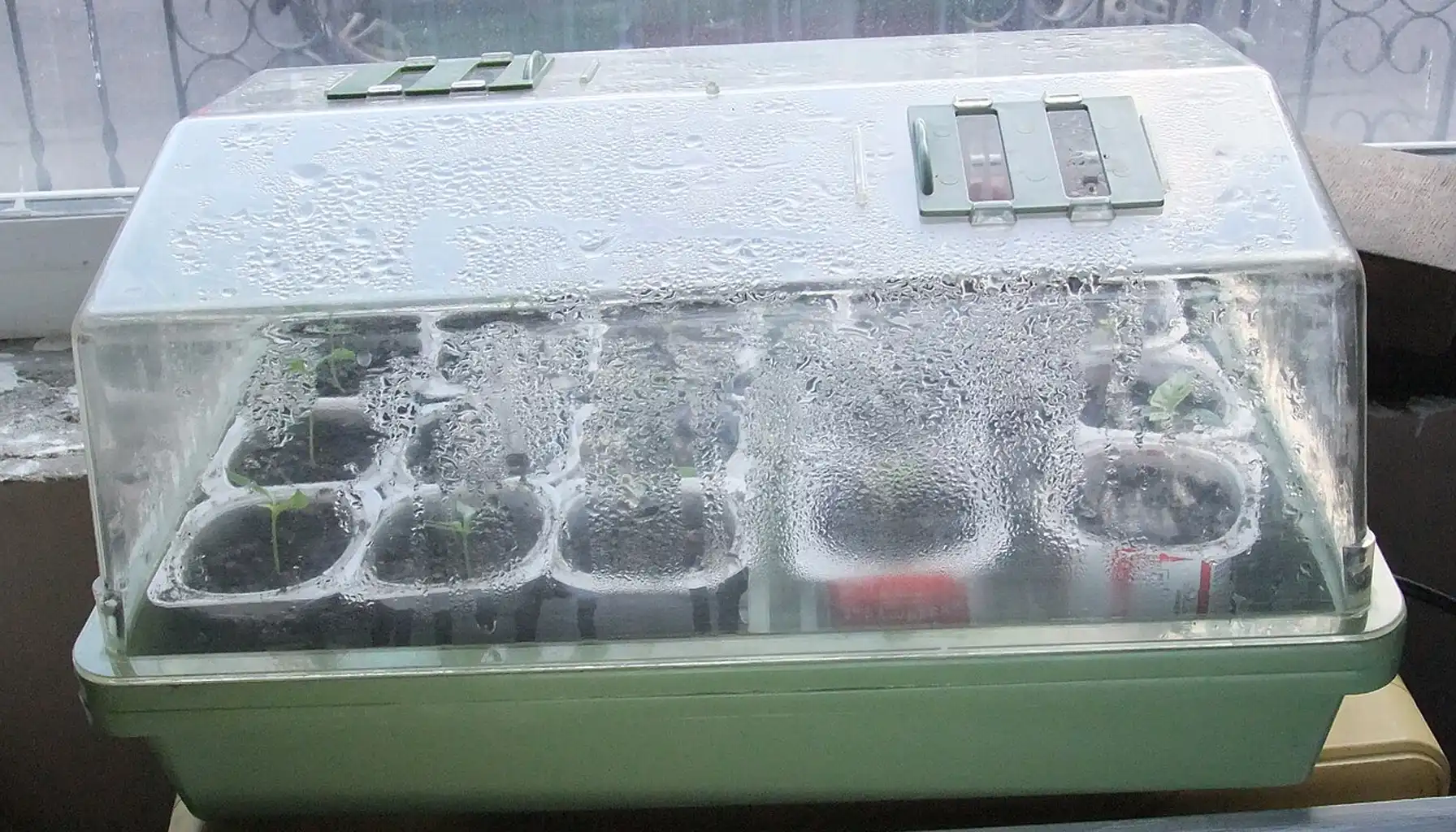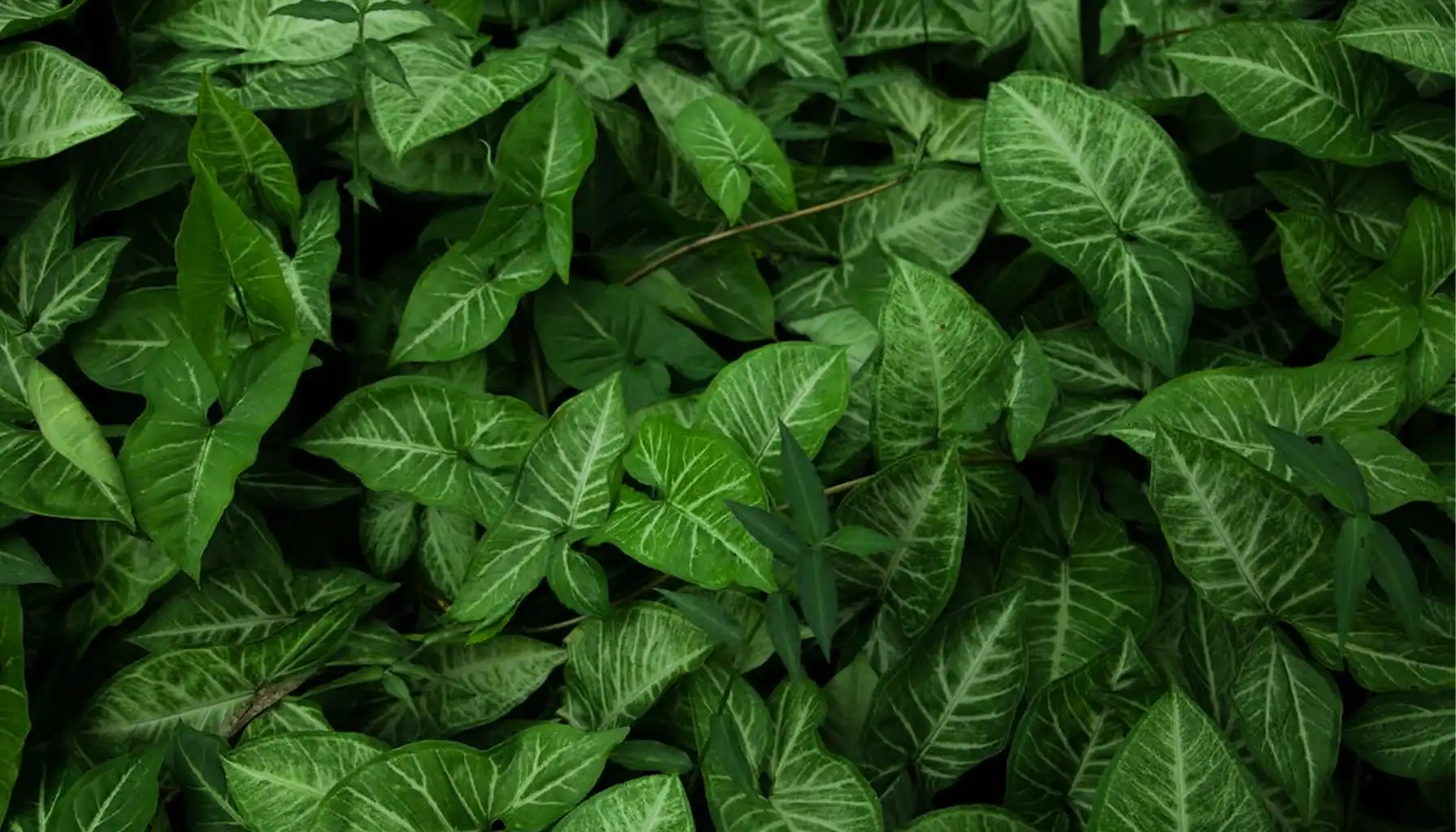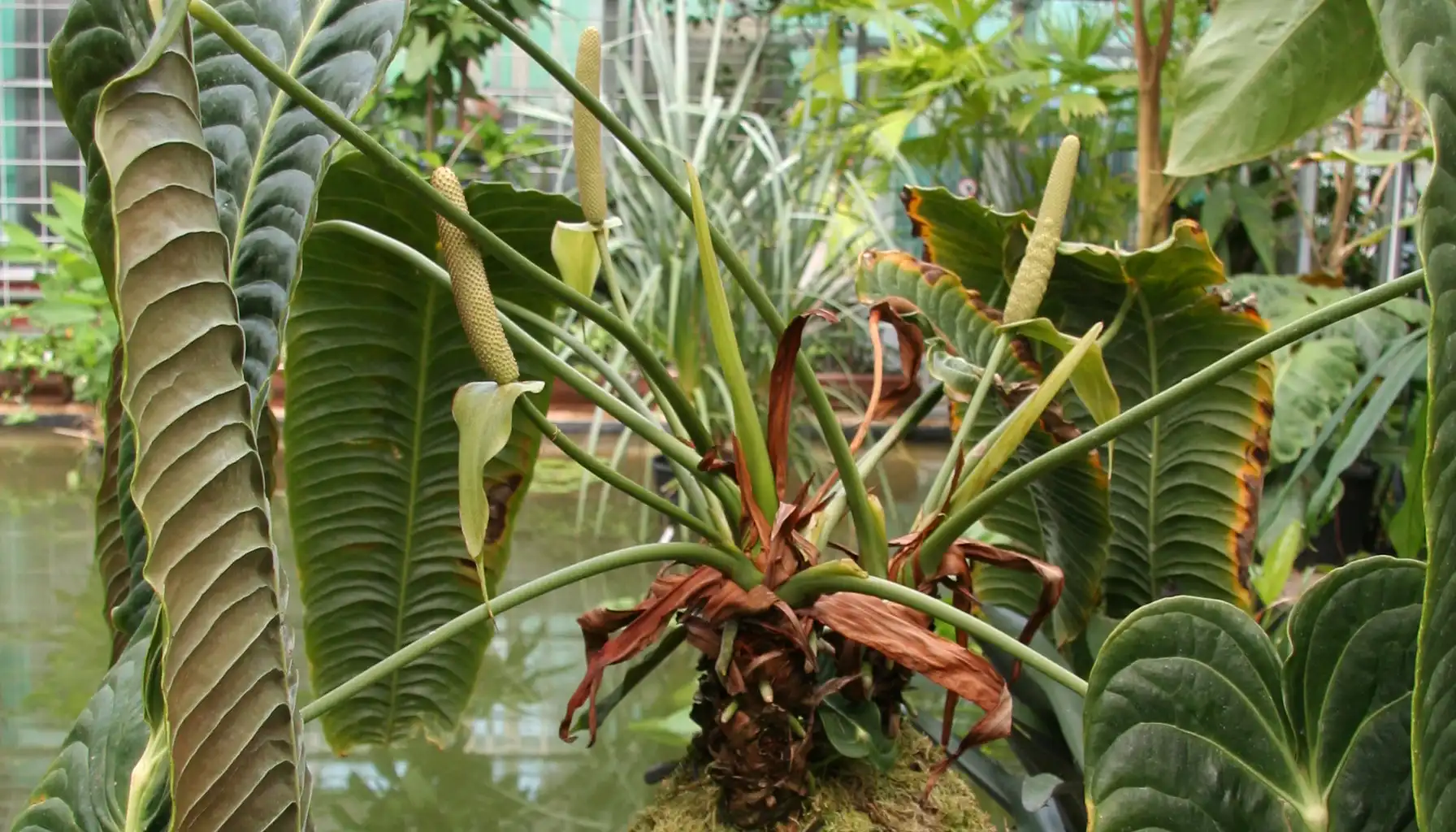From far away tropics to your house, Croton has made a long way. As a plant owner, you’d probably want to give this tourist a warm welcome.
What is a Croton plant, and how to properly care for it? Learn about its needs in this article. Information about many of its varieties is included.
With an app to identify plants, you can learn every little detail about the flowers and trees growing in your garden.
Plant Overview
Croton is a vibrant, tropical shrub known for its bold, multicolored foliage.
Is the Croton plant indoor or outdoor one? The answer is both. It is popular as both a house flora and a landscape flora in warm climates. Though it looks exotic, it's relatively easy to care for with the right conditions.
Croton Overview |
Feature | Details |
Origin | Southeast Asia and the Pacific Islands (Indonesia, Malaysia) |
Type | Broadleaf evergreen shrub |
Size | Indoors: 2 to 4 feet tall (60–120 cm). Outdoors: 8–10 feet tall (240–300 cm) |
Life span | Perennial. Can live for decades outdoors |
Leaf Colors | Green with a mix of green, yellow, red, and other colors |
Flowers | Small flowers, usually white and yellow |
Propagation | By stem cuttings |
Toxicity | Toxic to pets and people |
Special Features | Bright and has many colourful varieties |
Fun fact: The full name of this flora is Croton Petra plant. It is called “Petra” because it is said to resemble the stones of the famous archaeological site, Petra, in Jordan.
Croton Plant Varieties
This flora is often used for decorative reasons due to many colourful varieties (similarly to Siam Tulip). Plant breeders made sure to make this line very diverse when it comes to colours, hence it has many interesting varieties.
Let’s observe some of the most well-known varieties of this shrub.
Petra Croton Plant
This variety is so popular that it became synonymous with the plant itself. It features large, glossy leaves with prominent yellow, orange, and red veins against a dark green background.
Petra Croton plant care is easy, making it a very popular choice.
Mammy Croton Plant
This variety is known for its tight, corkscrew-shaped leaves that twist and curl as they grow. The foliage is glossy, with a mix of green, red, orange, and yellow tones.
Compared to Petra, the leaves on the Croton Mammy plant are thinner. It’s also smaller than most, making it compact and convenient for plant arrangement in a room.
Mammy croton plant care is overall similar to Petra’s.
Croton Gold Dust Plant
This variety is not “natural”, but lab-made. It has narrow, oval green leaves that are speckled with bright yellow dots, resembling gold dust.
Gold dust croton plant care is easy, but you need to be careful with light exposure. Golden drops, this flora is popular for being formed only with sufficient light.
Compared to other varieties, it’s very tall and less compact, but still stunning.
Purple Croton Plant
Technically, it’s not a variety but more of a color trend. “Mammy” and “Gold Dust” are popular enough, but purple varieties like Zanzibar and Royal Flush have little fame, so people are usually just looking for “Purple Croton” instead of something specific.
The variety of this colour has complicated relationships with the sun. Give it not enough sun, and the leaves will be dull. Give it too much, and they will be scorched.
Red Croton Plant
As with the purple variety, Red Crotons is not a defined group by itself, just a coloration trend. Red Iceton, for example, typically displays vibrant red and orange veins or entire red leaves, often mixed with green or yellow.
Red Crotons often stand out in a row of “ordinary” green flora.
Croton Plant Care Indoor and Outdoor
Gladly, this flora is not picky, and convenience is why many people keep it. Croton house plant demands just enough attention to make you feel like a gardener, but not too much to inconvenience you.
Get ready for the Croton plant indoor care + outdoor care guide.
Light
Crotons need bright, indirect light to maintain their bold colors. If there’s not enough sun, they start losing their colour and revert to dull green.
Some direct sunlight (especially morning sun) is beneficial, but harsh midday sun can scorch leaves.
For Croton plant care outdoors, place them near taller plants that could shade them when it gets too bright.
Watering
You need to water this flora when the soil gets dry. Keep the soil evenly moist, but never soggy.
Use room-temperature water, as cold water can shock the roots and stunt the growth.
Temperature
This flora feels comfortable in the 60–85°F (15–29°C) range. It is sensitive to cold and drafts. Temperatures below 50°F (10°C) can damage or kill the shrub.
If you have a Croton plant outdoor, you should put it in a container and bring it home for the winter, as it won’t survive cold.
Fertilizer
You don't need a specific fertilizer. A balanced liquid fertilizer every 4–6 weeks works wonderfully.
Fertilizing is better done in summer and spring, when the plant is growing. In fall and winter, the growth stops, and there’s no point in using fertilizers.
Moss plants also give good fertilizer if you mix them with perlite.
Soil
Like many other plants, this one has no specific soil requirements. A good choice for Croton plant soil would be a well-draining, rich potting mix. Such a mix will provide stable growth.
Croton Plant Propagation Tips
Propagation for this flora is usually done by stem cutting. It sounds a bit cruel, but it doesn't hurt the plant, and the method is very popular, used for propagation of popular plants like Lucky bamboo and others.
1. Choosing the Right Cutting
Select a healthy stem from the mother plant.
The cutting should be 4 to 6 inches long, contain at least 1 or 2 node points where leaves or roots grow.
The harder the stem, the higher the chances for a good propagation.
2. Preparing the Cutting
Using sterile scissors or pruning shears, make a clean cut just below a node.
Remove all lower leaves. Leave only 1–2 leaves at the top. It should help the lower nodes rebuild themselves into roots.
3. Planting the Cutting
Fill a small pot with moist, well-draining potting mix.
Make a hole in the soil with a stick or pencil and insert the cutting 1 to 2 inches deep, burying at least one node.
4. Creating a Humid Environment
Cover the pot with a clear plastic bag. The plastic shouldn’t touch the cutting.
Keep the setup in a warm spot with bright, indirect light. This moist and warm environment promotes growth.
If you have resources, you can use an electric propagator instead, for better results.
5. Caring for the Cutting While Rooting
Keep the soil evenly moist but not soggy.
Remove the plastic cover once a day to allow air circulation and prevent mold.
Do not fertilize during this stage.
After 3 to 5 weeks, you can try to touch the cutting. If there's a little resistance, it must have grown roots. Perfect! Now you can replant it into a bigger pot and let it grow.
Toxicity and Safety
Be careful! Croton is poisonous to people and animals.
Moreover, all parts of the croton plant, including its leaves, sap, and seeds, are toxic if ingested. Ingestion can cause various symptoms, including skin irritation, vomiting, and diarrhea. The sap causes skin irritation.
It’s not a deadly poison, but you definitely should keep your curious cats and other animals away.
Croton Plant Benefits
What is your reward for bringing this tropical flora into your house? Let’s find out what good lies in a croton indoor plant.
Benefit | Description |
Decorative Foliage | Multi-colored leaves (green, red, yellow, orange) can be pleasing for the eye and spice up your room design. |
Indoor Air Improvement | This flora is among the plants that purify the air indoors. This can improve your health long-term. |
Boosts Mood and Productivity | Bright colors and natural presence can reduce stress and enhance mental focus. |
Tropical Accent Indoors | Adds a bold, tropical feel to interior design and houseplant collections. |
Low Allergen | Crotons are not known to produce irritating pollen, making them allergy-friendly. |
AI Plant Finder
Have you ever been curious about flowers growing outside or maybe about the names of your local trees? One app can help you now.
AI Plant Finder is a smartphone app (available on both iOS and Android) that provides comprehensive tools for flora identification, health diagnosis, and personalized plant care.
You simply upload a picture or use your camera, and the app scans, trees, flowers, and weeds for you. The app matches the image against a database of over 300,000 flora species, with around 97% accuracy in recognition.
The app is completely free to download.
Related AI Plant Finder Posts
